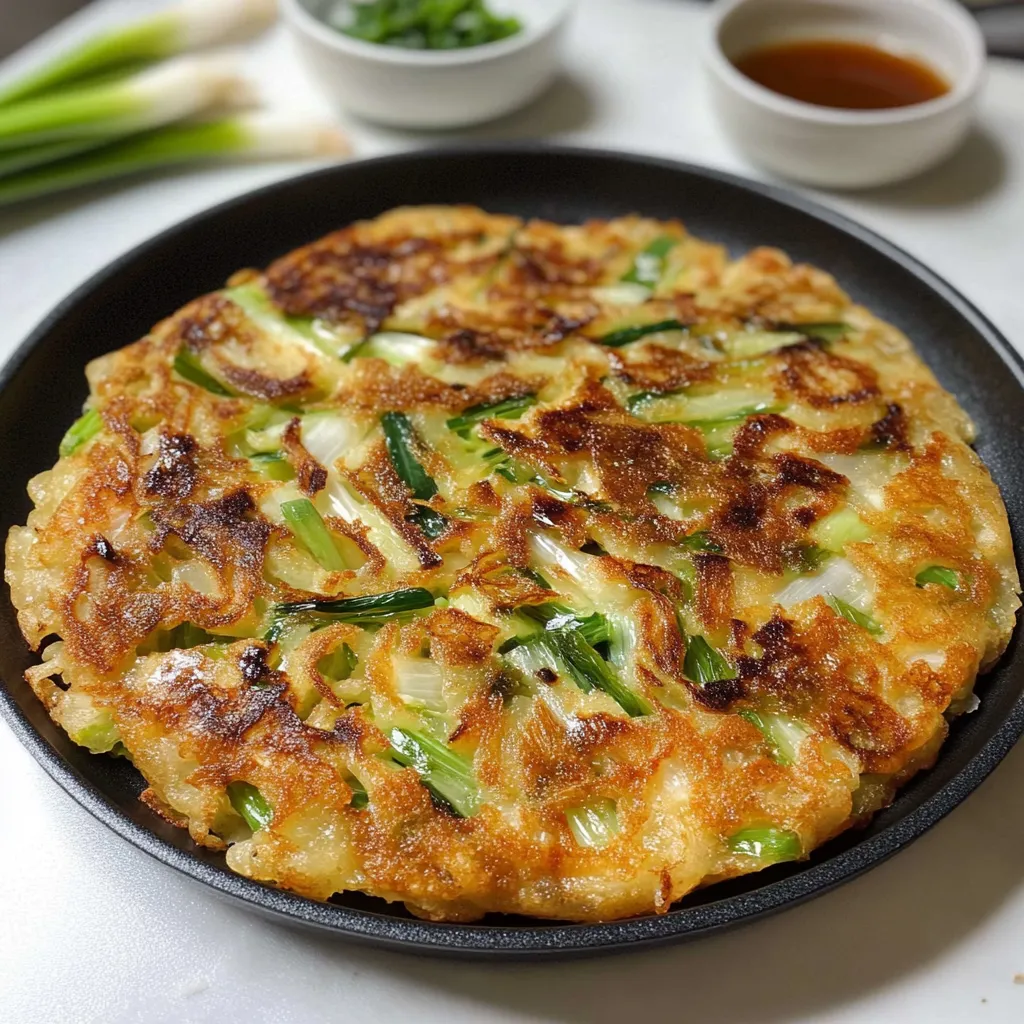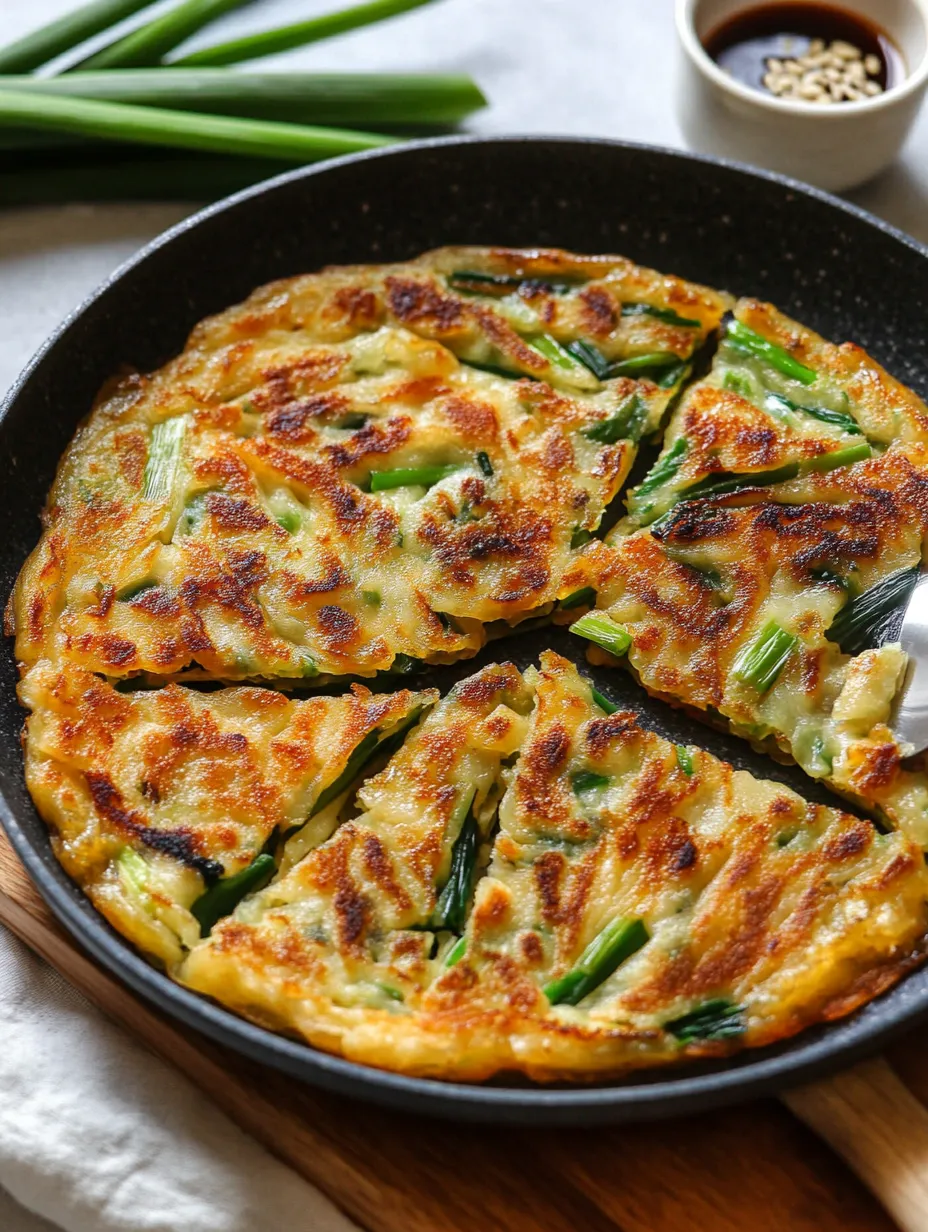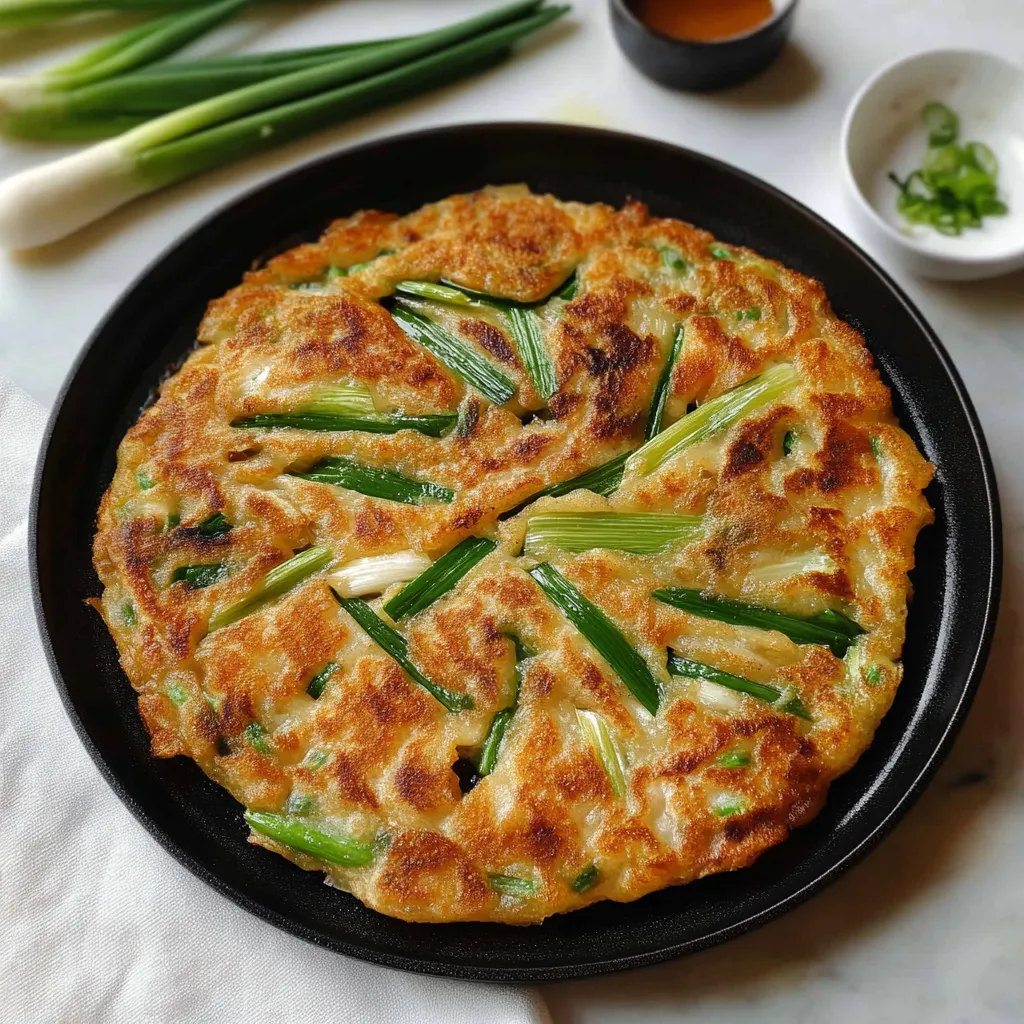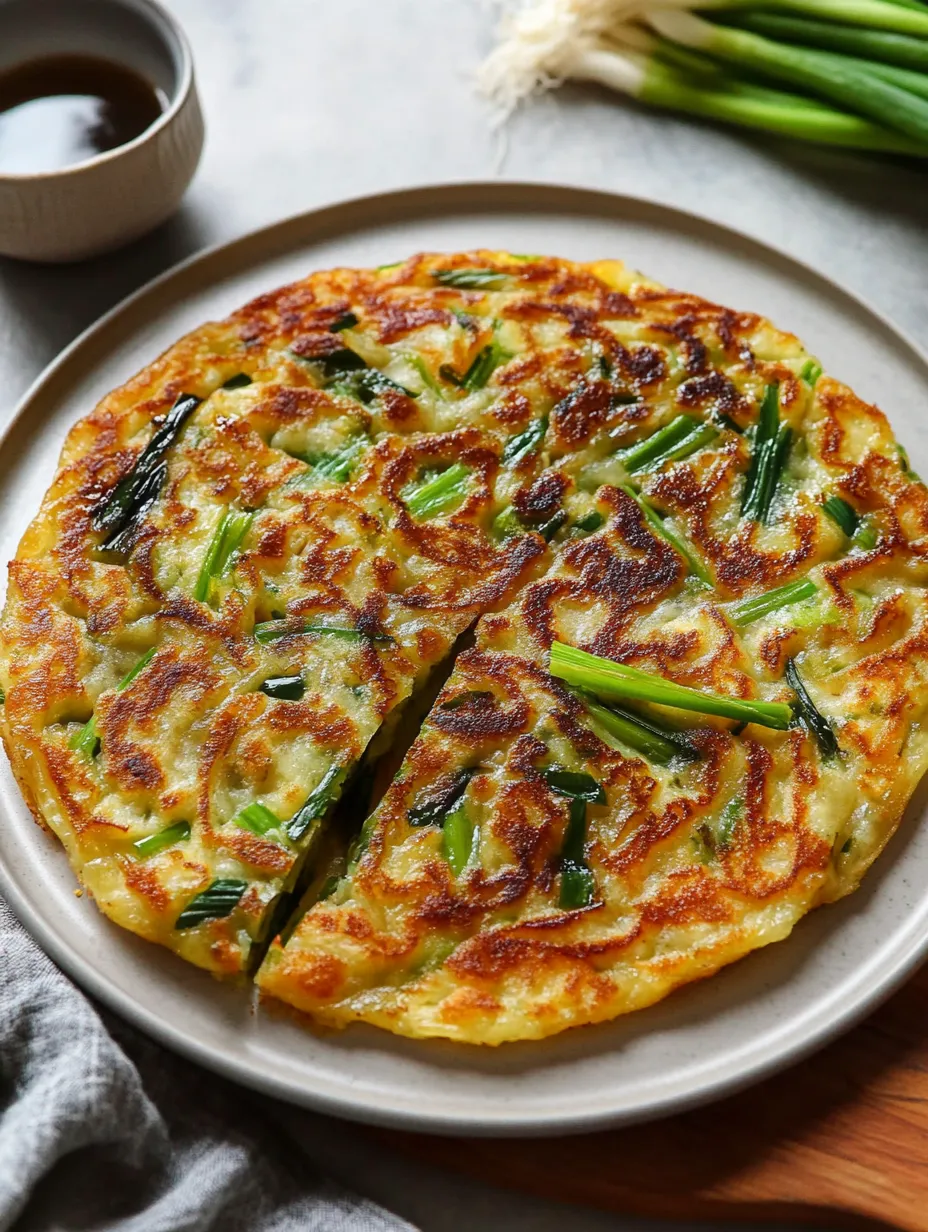 Pin it
Pin it
Korean scallion pancakes, or pajeon, hit that sweet spot between crispy and chewy with amazing flavor and almost no fuss. Loaded with fresh scallions and paired with a zingy dip, this tasty treat turns basic stuff into something special. I stumbled on pajeon at a tiny Korean spot one rainy day, and it's been my comfort food crush ever since—works great as a starter or a light bite.
Just days ago, I made these for some friends who came over, and one who'd spent three years living in Seoul told me they were the most genuine homemade pajeon she'd ever tried. The tricks? Don't hold back on the oil and make sure your water is ice-cold when mixing the batter.
Key Components and Shopping Advice
- Scallions: Grab bright, crisp ones without any yellow bits for top-notch flavor
- Potato Starch: Gives you that distinctive chewy-crunchy feel (you can swap in cornstarch if needed)
- Baking Powder: The hidden helper for extra crunch that many folks leave out
- Chicken Bouillon Powder: Brings rich taste without making your shopping list longer
- Nearly Frozen Water: Super cold water creates steam while cooking, making your pancake lighter
- Plain Oil: Pick something with high heat tolerance like regular vegetable or avocado oil
Step-by-Step Cooking Guide
- Get Scallions Ready: Clean them well and dry completely—wetness makes for soggy pancakes. Cut thicker white parts down the middle and chop into 1.5-inch chunks. This makes eating easier and helps everything cook evenly.
- Combine Dry Stuff: Throw flour, potato starch, baking powder, salt, bouillon powder, garlic powder, and onion powder in a bowl with your scallions. Pour in icy water and stir just enough to mix—too much stirring makes tough pancakes.
- Get Your Pan Hot: Take a big non-stick skillet over medium-high heat with plenty of oil (around 2.5 tablespoons). The oil should gently shimmer but not smoke. Good heat stops sticking and brings the crunch.
- Start With Scallions Down: Put scallions in hot oil, spread them out before adding batter over top. This method shows off the scallions and makes better texture than just mixing everything in one go.
- Cover With Batter: Pour your mix over the arranged scallions, filling any empty spots. Gently swirl to spread evenly without messing up your scallion pattern.
- Watch Your Heat: Turn down to medium and cook until the bottom turns golden and tiny bubbles form throughout, about 3 minutes. Right heat means your pancake cooks inside without burning outside.
- Flip Without Fear: Wait until it's set and golden before flipping. Use a big spatula and flip in one smooth move. Add the rest of your oil around the edges after flipping.
- Push Down For Crunch: Every so often, press down with your spatula while cooking the second side to create more contact with the pan, making it crunchier.
- Slice And Eat Right Away: Move to a cutting board and cut into squares or triangles. Serve hot for maximum crunch.
- Whip Up Easy Dipping Sauce: Mix soy sauce, rice vinegar, sesame oil, and chopped scallions. This tangy-savory combo perfectly matches your pancake.
 Pin it
Pin it
A Korean buddy taught me about patience with pajeon after laughing at my first try. "You've gotta wait," she told me, "until you see golden edges forming. If you rush, you'll end up with broken pancakes."
 Pin it
Pin it
Traditional Serving Customs
Koreans especially love pajeon on wet, rainy days, often drinking makgeolli (rice wine) alongside it. There's something really wonderful about munching on a crunchy, savory pancake while sipping fizzy, slightly sweet wine as rain falls outside. I've started doing this myself, keeping the ingredients handy for stormy nights when I need something cozy.
Flexibility and Different Takes
What makes this dish so great is how easily you can change it up. While the classic version focuses on scallions, you can toss in whatever you have around. Sometimes I add thin slices of mushrooms or bright bell peppers for more nutrients and eye appeal. Want something heartier? Try adding some small cooked shrimp or squid pieces to make haemul pajeon (seafood pancake), another Korean favorite that turns this simple dish into something more filling.
Connection to Tradition
Making pajeon links me to Korean food customs that prize simplicity and harmony. This basic pancake shows up at family events, street food stands, and restaurant menus all over Korea—loved by folks of all ages and backgrounds. Cutting the pancake into pieces for everyone reflects the Korean value of sharing meals together. Every time I cook this recipe, I'm taking part in a food tradition that's brought people together for countless years.
 Pin it
Pin it
Closing Thoughts
These crunchy treats have become my reliable standby when I need something quick but impressive. The satisfying sizzle when batter meets hot oil, the amazing smell of scallions cooking, and that first perfect bite with tangy sauce create an experience way beyond its simple ingredients. What's cool about pajeon is how it turns basic stuff into something special through good technique. It reminds me that cooking doesn't always need fancy ingredients or complicated steps—sometimes the most satisfying dishes come from nailing the basics and paying attention to small details that really matter.
Final Tips:
- For no gluten, swap regular flour with rice flour or a gluten-free mix
- Make your dipping sauce first so flavors can mingle while you prep the pancake
- Leftover pajeon warms up great in an air fryer at 350°F for 5 minutes
- For prettier presentation, save some green scallion tops to sprinkle over just-cooked pancakes
- Make double and freeze uncooked batter portions for quick future meals
Frequently Asked Questions
- → What does cold water do?
- It keeps the pancake crisp while cooking.
- → Can I swap out the starch?
- Stick to potato or corn starch—others won’t work as well.
- → Why keep onions dry?
- Wet onions will make it mushy, not crisp.
- → How far ahead can I make it?
- This dish tastes best served hot and fresh.
- → Which pan works best?
- Use a wide non-stick pan to cook evenly and flip easily.
